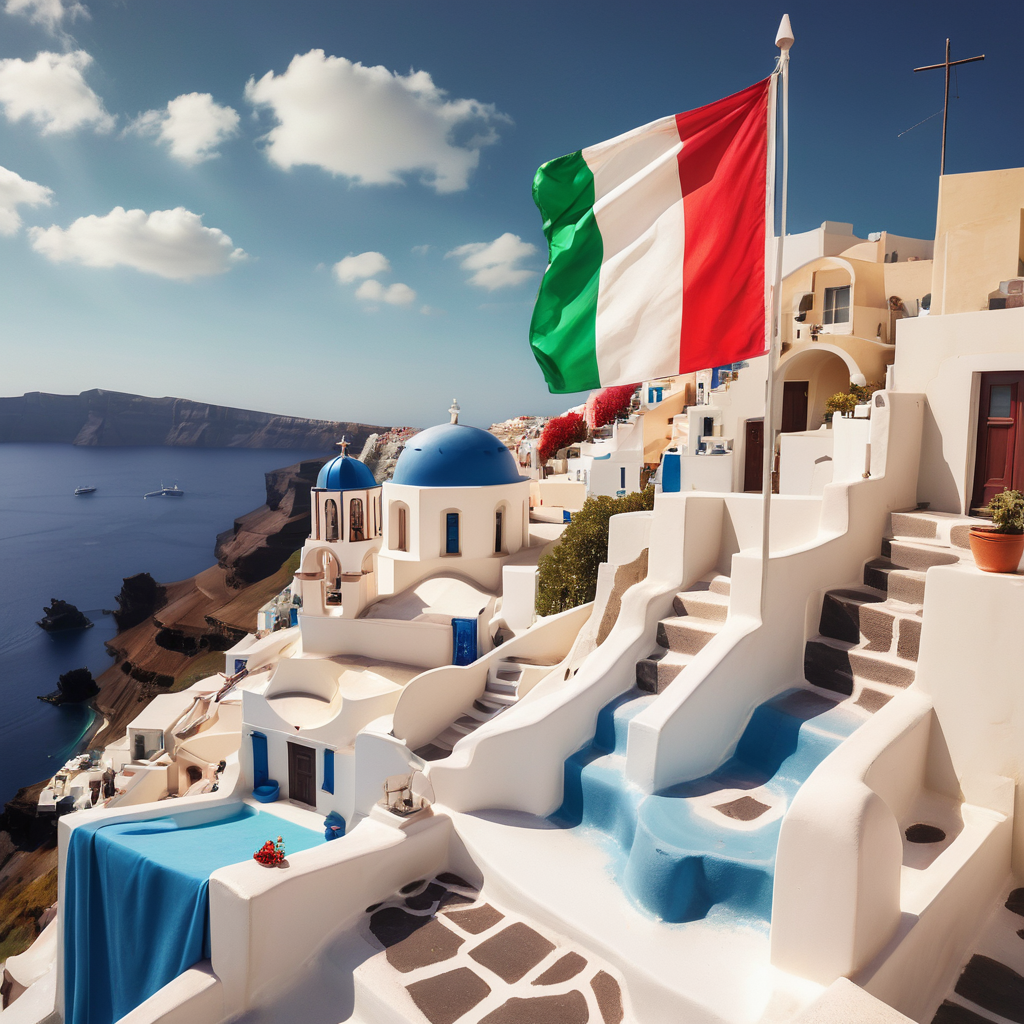
Santorini, Greece – Renowned for its breathtaking sunsets, iconic white-washed buildings, and crystal-clear waters, Santorini has long been a dream destination for travelers worldwide. However, this picturesque island is grappling with the unintended consequences of its popularity. In recent years, the surge in tourist numbers has begun to strain Santorini’s natural resources, infrastructure, and local community, raising concerns about the island’s sustainability and future.
Overwhelming Tourist Influx
Santorini, a small island in the Aegean Sea, has seen an exponential increase in visitors over the past decade. Once a serene getaway, the island now attracts millions of tourists annually. In 2019 alone, over two million tourists visited Santorini, a staggering number considering the island’s population of just around 15,000 residents.
The influx is driven by the island’s allure, boosted by social media, travel blogs, and word-of-mouth recommendations. The enchanting vistas and romantic ambiance make it a favorite for honeymooners, cruise ships, and influencers. However, this popularity comes at a significant cost.
Environmental Strain
The environmental impact of tourism on Santorini is profound. The island’s delicate ecosystem is under severe pressure from the constant influx of visitors. One of the most pressing issues is waste management. The surge in population, albeit temporary, generates an enormous amount of waste, overwhelming the island’s limited facilities. Beaches, streets, and even the famous caldera are often littered with plastic and other debris, detracting from the island’s natural beauty and posing a threat to marine life.
Water scarcity is another critical concern. Santorini relies heavily on desalination plants and imported water to meet the demands of both locals and tourists. The heightened demand during peak tourist seasons exacerbates the issue, leading to water shortages and increased costs for the local population.
Infrastructure Overload
Santorini’s infrastructure is struggling to cope with the sheer volume of tourists. The island’s narrow streets, designed for a much smaller population, are frequently clogged with traffic. This congestion is particularly problematic in the summer months when the influx of rental cars, taxis, and tour buses peaks. The charming, labyrinthine alleys of towns like Fira and Oia become overcrowded, making it difficult for both residents and tourists to navigate.
Public services such as transportation, healthcare, and emergency response are also stretched thin. The island’s limited medical facilities are often ill-equipped to handle the sudden surge in population, which can lead to long wait times and inadequate care during emergencies.
Economic Disparities
While tourism is the lifeblood of Santorini’s economy, the benefits are not evenly distributed. The rapid commercialization has led to skyrocketing property prices and living costs, making it increasingly difficult for locals to afford to live on the island. Many residents are forced to move away or live in substandard conditions, while luxury hotels and vacation rentals proliferate.
Local businesses, particularly those catering to tourists, often dominate the market, overshadowing traditional trades and crafts. The influx of international chains and tourist-oriented shops has eroded the island’s cultural heritage and authenticity, creating a homogeneous and commercialized landscape.
Steps Towards Sustainable Tourism
Recognizing the challenges, local authorities and stakeholders are beginning to take steps towards more sustainable tourism practices. Initiatives such as limiting the number of cruise ships allowed to dock each day, promoting off-season travel, and encouraging eco-friendly practices among businesses are gaining traction.
Efforts to preserve the island’s natural beauty and cultural heritage are also underway. Projects aimed at reducing plastic waste, conserving water, and protecting marine life are being implemented. Additionally, there is a growing emphasis on promoting responsible tourism, encouraging visitors to respect the local environment and community.
A Call to Action
Santorini’s plight serves as a poignant reminder of the delicate balance between tourism and sustainability. While the island’s charm and allure will continue to draw visitors, it is imperative that both tourists and local authorities work together to mitigate the negative impacts. By embracing sustainable practices and fostering a more equitable distribution of tourism’s benefits, Santorini can hope to preserve its enchanting beauty for future generations.
As the world continues to explore and discover new destinations, Santorini’s experience underscores the importance of mindful and responsible travel. The island’s story is not just a cautionary tale but also an opportunity to redefine and reshape the future of tourism.



